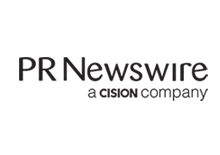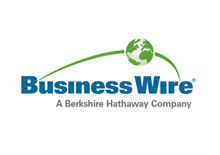Worldwide Core Material Kitting Market by End-Use Industry, Core Material, Honeycomb, Foam, Process, and Region - Forecast to 2024 - ResearchAndMarkets.com
The "Core Material Kitting Market by End-Use Industry Type, by Core Material Type, by Honeycomb Type, by Foam Type, by Process Type, and by Region, Trend, Forecast, Competitive Analysis, and Growth Opportunity: 2019-2024" report has been added to ResearchAndMarkets.com's offering.
The next five years for the core material kitting market are going to be vigorous with sizeable growth opportunities for the market participants. This comprehensive report assesses the global core material kitting market over the trend period of 2013 to 2018 and the forecast period of 2019 to 2024.
It is estimated that the global core material kitting market would reach an estimated value of US$ 550.1 million in 2024.
Several factors bolstering the demand for core material kitting are organic growth of major composite-driven markets coupled with increased penetration of composite materials, increasing demand for lightweight core materials, and excellent benefits of core materials kitting.
The key market trends shaping the competitive landscapes are the execution of mergers and acquisitions and higher involvement of core material suppliers in kitting services. For instance; Gurit Holding AG, one of the largest core material providers, acquired JSB Group A/S for an equity value of DKK 520 million in October 2018. JSB Group was the leading core material kitting service provider for the wind energy segment. The acquisition consequentially aided Gurit's capability as well as its positioning in the kitting market.
The market is segmented based on the end-use industry type as wind energy, aerospace & defence, marine, transportation, construction, and others. Wind energy is expected to remain the largest market for core material kitting during the forecast period. Rising demand for an alternative source of energy has led to an increased focus of various governments and non-government institutions towards the wind energy sector. Increasing wind turbine installation coupled with longer rotor blades has resulted in a greater penetration of sandwich panels constructed with foam and balsa core materials. This factor is acting as the prime driver for the core material kitting market in the wind energy.
Based on the core material type, the market is segmented as foam, honeycomb, and balsa. Foam core is further bifurcated into PVC, PET, and others. Similarly, honeycomb core is bifurcated into Nomex honeycomb, aluminium honeycomb, and others. Foam core is expected to remain the largest segment of the market during the forecast period. Foam core is widely used in wind energy and marine composite parts, owing to its low specific weight and high mechanical rigidity and stiffness. The honeycomb core is expected to witness the highest growth during the same period, driven by its extensive usage in the aerospace & defence industry.
In terms of regions, North America is expected to remain the largest market for core material kitting during the forecast period. The USA is the growth engine of the region's market with the presence of major OEMs, tier players, core material suppliers, and kitting service providers. Some of the major markets including marine, aerospace & defence, and construction are dominated by the region.
Asia-Pacific is expected to experience the highest growth in the market during the forecast period. The highest growth of Asia-Pacific is mainly attributable to the consequential growth in wind turbine installation coupled with regional expansion of major core material suppliers in the region; growing penetration of composites in the transportation industry; opening of assembly plants of Boeing and Airbus for B737, A320, and A330 aircraft programs; upcoming indigenous aircraft program such as C919 and CR929; and expanding construction sector.
The supply chain of this market comprises raw material suppliers, core material suppliers, kitting service providers, tier players, and end-users. Some of the key players in the core material kitting market are JSB Group A/S (now a part of Gurit Holding), Hexcel Corporation, DIAB Group, Gurit Holding AG, 3A Composites GmbH, and Argosy International Inc. Development of highly optimized core material kit, higher involvement of core material manufacturers in kitting services, and execution of mergers & acquisitions are the key strategies adopted by the major players to gain a competitive edge in the market.
The following are the key features of the report:
- Market structure: Overview, industry life cycle analysis, supply chain analysis
- Market environment analysis: Growth drivers and constraints, Porter's five forces analysis, SWOT analysis
- Market trend and forecast analysis
- Market segment trend and forecast
- Competitive landscape and dynamics: Market share, Product portfolio, New Product Launches, etc.
- Attractive market segments and associated growth opportunities
- Emerging trends
- Strategic growth opportunities for the existing and new players
- Key success factors
Key Topics Covered
1. Executive Summary
2. Core Material Kitting Market - Overview and Market Forces
2.1. Introduction
2.2. Market Classification
2.3. Market Drivers
2.4. Market Constraints
2.5. Supply Chain Analysis
2.6. Industry Life Cycle Analysis
2.7. PEST Analysis: Impact Assessment of Changing Business Environment
2.8. Porter's Five Forces Analysis
2.9. SWOT Analysis
3. Core Material Kitting Analysis - By End-Use Industry Type
3.1. Strategic Insights
3.2. Wind Energy Core Material Kitting Market Trend and Forecast (US$ Million)
3.3. Aerospace & Defense Core Material Kitting Market Trend and Forecast (US$ Million)
3.4. Marine Core Material Kitting Market Trend and Forecast (US$ Million)
3.5. Transportation Core Material Kitting Market Trend and Forecast (US$ Million)
3.6. Construction Core Material Kitting Market Trend and Forecast (US$ Million)
3.7. Other 8+Core Material Kitting Market Trend and Forecast (US$ Million)
4. Core Material Kitting Market Analysis - By Core Material Type
4.1. Strategic Insights
4.2. Foam Core Material Kitting Market Trend and Forecast (US$ Million)
4.3. Honeycomb Core Material Kitting Market Trend and Forecast (US$ Million)
4.4. Balsa Core Material Kitting Market Trend and Forecast (US$ Million)
5. Core Material Kitting Market Analysis - By Process Type
5.1. Strategic Insights
5.2. Machined Core Material Kitting Market Trend and Forecast (US$ Million)
5.3. Manual Core Material Kitting Market Trend and Forecast (US$ Million)
6. Core Material Kitting Market Analysis - By Region
6.1. Strategic Insights
6.2. North American Core Material Kitting Market Analysis
6.3. European Core Material Kitting Market Analysis
6.4. Asia-Pacific's Core Material Kitting Market Analysis
6.5. Rest of World's (RoW) Core Material Kitting Market Analysis
7. Competitive Analysis
7.1. Strategic Insights
7.2. Product Portfolio Analysis
7.3. Presence by End-Use Industry Type
7.4. Presence by Core Material Type
7.5. Geographical Presence
7.6. New Product Launches
7.7. Strategic Alliances: Mergers and Acquisitions, Joint Ventures, Collaborations etc.
7.8. Expert Opinion
7.9. Market Share Analysis
8. Strategic Growth Opportunities
8.1. Strategic Insights
8.2. Market Attractive Analysis
8.3. Growth Matrix Analysis
8.4. Emerging Trends
8.5. Key Success Factors
9. Company Profiles of Key Players
9.1. 3A Composites GmbH
9.2. Argosy International Inc.
9.3. DIAB Group
9.4. Gurit Holding AG
9.5. Hexcel Corporation
9.6. JSB Group A/S (in 2018, acquired by Gurit)
9.7. METYX Composites
9.8. MSA Manufacturing Ltd.
9.9. Solvay S.A.
For more information about this report visit https://www.researchandmarkets.com/r/b6g8u
View source version on businesswire.com: https://www.businesswire.com/news/home/20190729005481/en/





